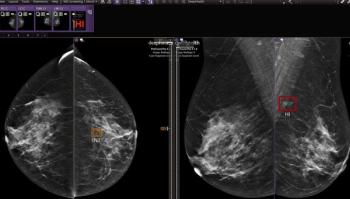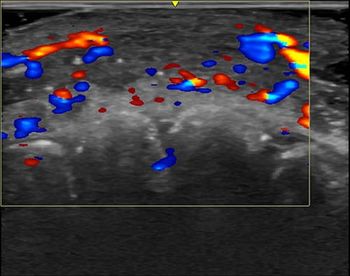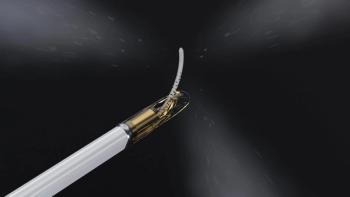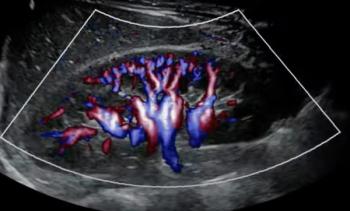Surveillance magnetic resonance imaging (MRI) significantly reduces the risk for advanced second breast cancer presentations and the proportion of symptomatic second breast cancers, according to new research findings.
For the retrospective study, recently published in Radiology, researchers reviewed data from 3,688 women (mean age of 51.1) with a personal history of breast cancer (PHBC). Surveillance breast MRI was utilized for 2,130 women in the cohort, according to the study.
The researchers found that surveillance breast MRI was associated with a 79 percent lower risk of advanced second breast cancer presentations prior to propensity score matching (PSM) and a 59 percent lower risk after PSM.
Surveillance breast MRI also led to a greater than threefold reduction in the proportion of symptomatic second breast cancers (6.4 percent vs. 24.6 percent) prior to PSM and a greater than sixfold reduction (3.2 percent vs. 20.8 percent) after PSM.
“Our study found that surveillance MRI was associated with a decreased occurrence of advanced second breast cancer in women with a PHBC, even after adjusting for confounding variables,” wrote lead study author Jiyoung Yoon, M.D., who is affiliated with the Department of Radiology and Research Institute of Radiological Science at Yonsei University College of Medicine in Seoul, South Korea, and colleagues.
(Editor's note: For additional MRI content, click here.)
Three Key Takeaways
- Risk reduction of advanced second breast cancer. Surveillance MRI significantly reduces the risk of advanced second breast cancer presentations in women with a personal history of breast cancer (PHBC)— by 79 percent before propensity score matching (PSM) and 59 percent after PSM.
- Lower proportion of symptomatic second breast cancers. The use of surveillance MRI leads to a notable reduction in symptomatic second breast cancers with greater than a threefold reduction before PSM (6.4 percent vs. 24.6 percent) and greater than a sixfold reduction after PSM (3.2 percent vs. 20.8 percent).
- Detection efficacy. Fourteen out of 16 surveillance MRI-detected cases of asymptomatic second breast cancers were missed by mammography, highlighting the added diagnostic value of MRI in detecting asymptomatic breast cancer.
Out of 44 asymptomatic second breast cancers detected with surveillance MRI, the study authors noted that mammography detected 15 of the cases and breast ultrasound detected 13 cases. For the remaining 16 cases, there were nine cases of invasive carcinoma but no cases involving advanced second breast cancer presentations. In this group of asymptomatic cases, the researchers saw clear differences between mammography and surveillance MRI.
“Of the 16 MRI-detected cancers, 14 cases were negative at mammography, and two cases were assessed as Breast Imaging Reporting and Data System (BI-RADS) category 0 on mammograms due to a newly developed focal asymmetry or suspected skin thickening,” pointed out Yoon and colleagues.
(Editor’s note: For related content, see “New Study Finds Racial Disparities with Pre-Op Breast MRI and Positive Surgical Margin Rates,” “Can Diffusion MRI Predict Patient Response to Neoadjuvant Chemotherapy for Breast Cancer?” and “Is the Kaiser Score More Effective than BI-RADS for Assessing Contrast-Enhanced Mammography and MRI?”)
Beyond the inherent limitations of a single-center retrospective study, the authors acknowledged their definition of advanced second breast cancer did not include those with concurrent distant metastasis. They conceded that for overall development of second breast cancer, there was no difference between surveillance MRI and the non-MRI cohort after adjusting for clinical variables. The researchers also noted that surgical margin status was not evaluated as a matching variable in the study.





























